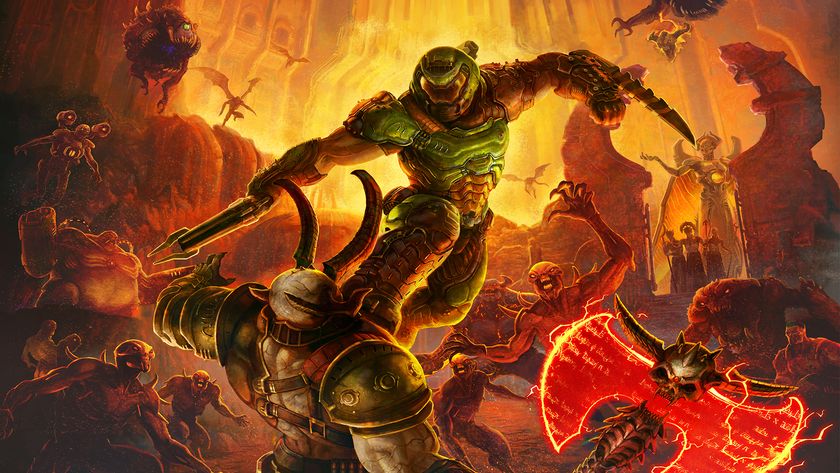The history of Mortal Kombat
Prepare yourself! We examine the original arcade hit that corrupted minds and led to the creation of the ESRB
The second MK arrived in 1993, just about a year after the original. As you’d expect, the character roster increased, the graphics and animation were improved, the story was ramped up and, most importantly, the blood and gore were taken to a new level.
Each fighter now had two fatalities to choose from, as well as three different Pit-like stages to hurl your opponent into. With more moves and more playable characters came deeper battles and slightly more robust combo opportunities than the original. To this day, this is arguably the best MK game to date when it comes to high-level play, a scene usually dominated by Street Fighter (and later Tekken, BlazBlue etc).

Above: MKII directly continued the loose story from the first game, creating an ongoing canon that would help power movies, cartoons and sorts of cash-in goodies
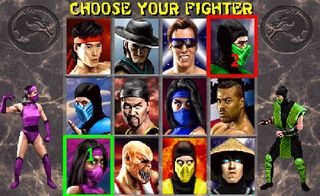
Above: The roster grew from 7 to 12, including the previously unplayable Reptile and Shang Tsung, as well as palette-swapped ladies Kitana and Mileena

Above: Lovely new versus screens showed off new costumes for the digitized actors

Above: MKII was the first game to print “FATALITY” in bloody letters; the first game merely listed the word amongst other post-match details
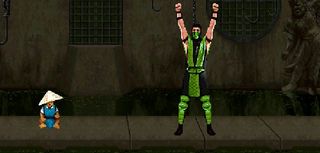
Above: MKII also introduced Babalities and Friendships as alternate finishing moves. Fun asides, but they set a precedent the series would eventually take too far
Sign up to the 12DOVE Newsletter
Weekly digests, tales from the communities you love, and more
When MKII arrived on consoles in October 1994, the Nintendo version remained faithful to the arcade original, including every fatality and drop of blood that made the game a hit. However, the SNES version arrived mere weeks before the ESRB ratings finally appeared on games, so we got a 17-only warning on the box. It’s the only SNES game to feature this image.
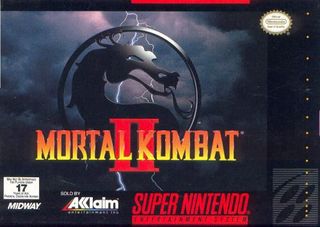
Above: Neither Sega’s rating system nor ESRB. Merely a “May not be appropriate for players under 17” statement
Above: The commercial was suitably epic. See, MK was a big damn deal!
The multi-fatality options that began here reappear in this year’s game, as does the entire cast. Near as we can tell, the new game doesn’t contain any Babality silliness, so it’s leaning more towards outlandish violence than dark humor. As far as gameplay enhancements go, MKII did offer a smoother, more playable experience than the first game, but it didn’t really introduce any new mechanics. That honor goes to the next game in the list…

Jumping ahead to 1995 we see Mortal Kombat 3, which arrived just in time for the first film. Expectations were astronomically high, as not only was MKII a big hit, but the fighting scene in general was now full of numerous high-quality options. Could MK still compete after taking a year off? Could they improve on II as much as it improved on MK1?
Our opinion lies somewhere in the middle; MK3 added new gameplay features like the dial-a-combo system (every character had pre-set combos you could pull off by pushing buttons in a certain order) and the Run button designed to make combat more aggressive, but both of these additions made MK3 feel and play almost completely different from MKII. On one hand, it’s admirable that Midway would mix things up so thoroughly; on the other, most of us kinda just wanted a freshened up MKII.
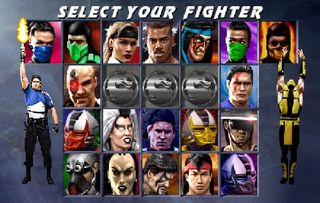
Above: The Ultimate MK3 roster, which added cyber ninjas, a lady-Goro and the pitiful Stryker
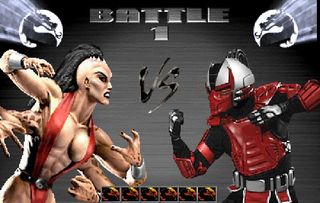
Above: Sheeva and Sektor square off on the new Vs screen. New “Kombat Kode” symbols appear on the bottom; mashing buttons would shift the symbols around and occasionally combine to produce a game-altering effect
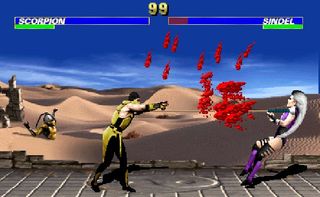
Above: Oddly, MK3 did not contain Scorpion. Shortly thereafter, UMK3 brought him back. Probably shouldn’t leave out your most popular characters, Midway!
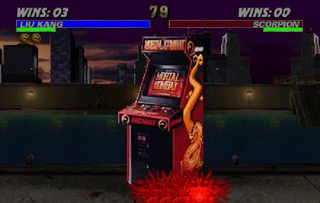
Above: MK3 took the silliness too far at times, ruining the otherwise dead-serious storyline. Here Liu Kang drops the MK1 arcade unit on Scorpion. Funny, we guess?
In just three years Mortal Kombat had gone from concept to arcade mainstay. However, in that same time, MK had to keep evolving its gameplay and story while Capcom was content to re-release tweaked versions of SFII. This fact alone strongly proves SFII’s staying power compared to any MK; one needed minor touch ups to survive for five years, while the other had to change things up every single time. Then again, the MK team pushed the boundaries and played with the format, whereas SF stuck to its guns, pushing off Street Fighter III for so long that the mass audience loss interest. This coincided with consoles that could produce arcade-quality games for a fraction of the price, ultimately leading to the general decline of arcades. Sad times for sure.
But for those few years, MK captured the hearts and minds of a generation and became one of the best-selling, most popular series of all time. And it’s these three titles that this years’ MK reboot pulls from so thoroughly. Every character in the new game (save Quan Chi) is from the original trilogy, and the story is actually a thorough retelling of the first three games. In other words, developer NetherRealm is fully banking on nostalgia and familiarity of these three to drive interest in the new game. Not a bad tactic at all, as Street Fighter IV clearly preyed on our memories of SFII to lure us back in. Worked then, probably will work now.
We’ll have a full review of the MK next week. Until then, why not watch this video, which should help explain why the new game pays no attention to Mortal Kombat 4…
Apr 13, 2011


MK’s gone in some strange directions once finishing the fight
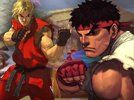
Two of gaming's most iconic fighters are dissected, game by game
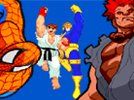
VIDEO: Seth Killian walks us through 16 years of fighting history
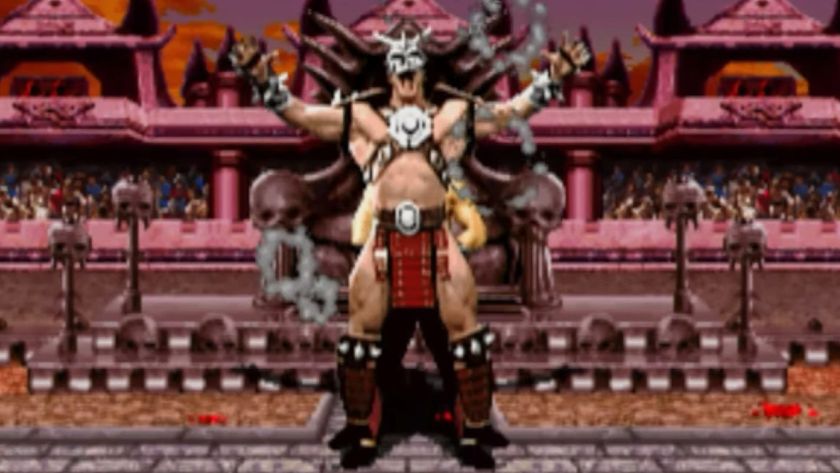
After 32 years, Mortal Kombat 2 has finally been ported to the one hyper-expensive '90s console that could actually do it justice
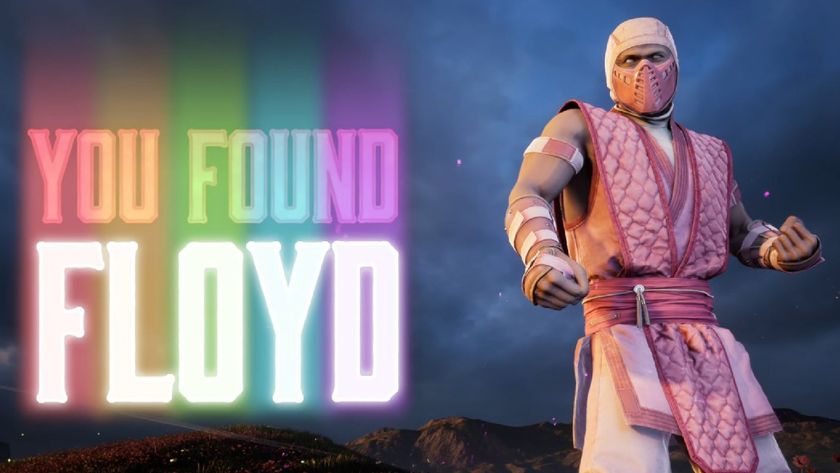
Mortal Kombat 1 makes good on a 30-year tradition of trolling fans by introducing a confusing, labyrinthine quest to fight pink Floyd, a new ninja
